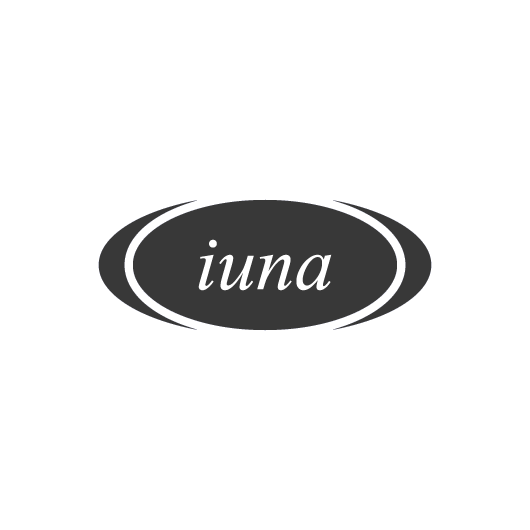Ireland National Teens Food Survey Database (IUNA)
The IUNA Teens Food Survey is a nationally representative database of food consumption in teenagers aged 13-18 years

What is the IUNA National Teens’ Food Survey 2006?
The Irish Universities Nutrition Alliance National Teens’ Food Survey 2006 (NTFS) was a cross-sectional study conducted between September 2005 and September 2006. The survey was planned and carried out by the nutrition units in University College Cork and University College Dublin, which are a part of the Irish Universities Nutrition Alliance (IUNA). The aim of this survey is to establish a nationally representative database of food consumption in teenagers aged 13-18 years. The data generated would be used to cater to both the nutrition and food safety issues of relevance to the development and implementation of public health policy, food safety risk assessment and the needs of the food industry in terms of compliance. Apart from the food consumption, data regarding weight, lifestyle, physical activities, food recipes and choices were collected.
For the IUNA Teens’ Survey 2006, teenagers aged 13-17 years (224 males, 217 females) were selected from 32 secondary schools throughout the Republic of Ireland. The database of secondary schools available from the Department of Education and Science was used to select the schools for the survey. Schools were randomly selected from secondary, vocational and comprehensive/community schools in a manner that the final sample had equal representation, meaning that the percentage of teenagers surveyed attending each of the categories of schools was equal to the percentage of children attending each of these categories of schools according to the database.
Trained nutritionists carried out the Irish Universities Nutrition Alliance National Teens’ Food Survey. Upon consent from the selected schools’ principal, introductory letters and information brochures were provided to the guardians of the students. A seven-day food diary was used to collect food and beverage intake information. The surveyors made a total of four visits to the respondents during the seven-day survey period. The survey participants were requested to note down detailed information about the amount and types of all foods, beverages and supplements consumed over the seven-day period and cooking method used, the brand name of the consumed food, packaging size and type, recipes and flavours. Additionally, data on each eating and drinking occasion, the respondents’ definition of each eating or drinking occasion, location of preparation and source of the mean were also collected.
Established standard food weighing protocols, photographic food atlas and manufacturer’s information were used for recording the data. The questionnaire also included questions about the teen’s health and lifestyle and the parents’ health. Moreover, physical activity and eating behaviour, along with anthropometric measurements (weight, height, waist and hip circumference and leg length), were measured for both the teenagers and their parents. Customised computer software was used for data recording and processing, and the databases were finally created.
Availability in Creme Food and Creme Dietary Intake Intelligence Tool
- Available as a dashboard
- Available in a model
- Update frequency: Every Two to Five Years
- Countries: Ireland
- Age Range: 13-18 years
- Release Date: 2006
Dietary Intake Intelligence Tool
Dietary Intake Intelligence Tool combines the latest dietary intake data with a versatile, simple to use data interrogation tool.
Efficiently find the answers you are looking for.
Datasets available from IUNA
- North South Ireland Food Consumption Survey (1997-1998)
- National Children's Food Survey (2003-2004)
- National Teens’ Food Survey (2005-2006)
- NANS National Adult Nutrition Survey 2008-2010
- National Pre-School Nutrition Survey (2010-2011)
- National Children's Food Survey II (2017-2018)
- National Teens' Food Survey II (2019-2020)
Related questions about the IUNA Teens Food Survey Database
How do I access the Ireland Nutrition Alliance National Teens’ Food Survey 2006 datasets?
The data for Ireland NPNS 2010-2011 survey can be obtained from the official website of IUNA – Irish Universities Nutrition Alliance.
To access the NPNS 2010-2011 data,
– Go to the official website of IUNA: https://www.iuna.net/
– Click on the ‘Survey reports’ tab on the website menu
A report on the data is available in the following file (pdf):
We have accessed various raw datasets and have tested and validated them in our models and produced visual analytics tools in dashboards. We can facilitate requesting permission for use of the above raw data for use in our models.
How is the Irish Universities Nutrition Alliance National Teens’ Food Survey 2006 database used by companies, institutes and organizations?
Irish Universities Nutrition Alliance National Teens’ Food Survey 2006 are used widely for research related to nutrition, public health and food safety. The datasets support the work of agencies that are responsible for food and nutrition policy and regulation in Ireland and the European Union. The findings from the NANS 2011Ireland are used to develop health policies.
More specifically, the following are some usages for NPNS 2010-2011 survey datasets for companies, the food industry and policymakers:
- To assess the typical food consumption patterns of teenagers in Ireland using models such as Creme Nutrition.
- To calculate the average amount of nutrients (micronutrients and macronutrients) consumed by the teenage population of Ireland
- To develop and design food products and production processes to ensure a healthy intake of essential nutrients among the Irish teenagers
- For producers and industries to use the database as a reference tool while introducing a new food item in the market for teenagers
- To assess the relationship between socio-economic status, physical activities and other variables in the health and well-being of the Irish teenagers
- To assess exposure to chemical and biological hazards in foods using tools such as Creme Food Safety